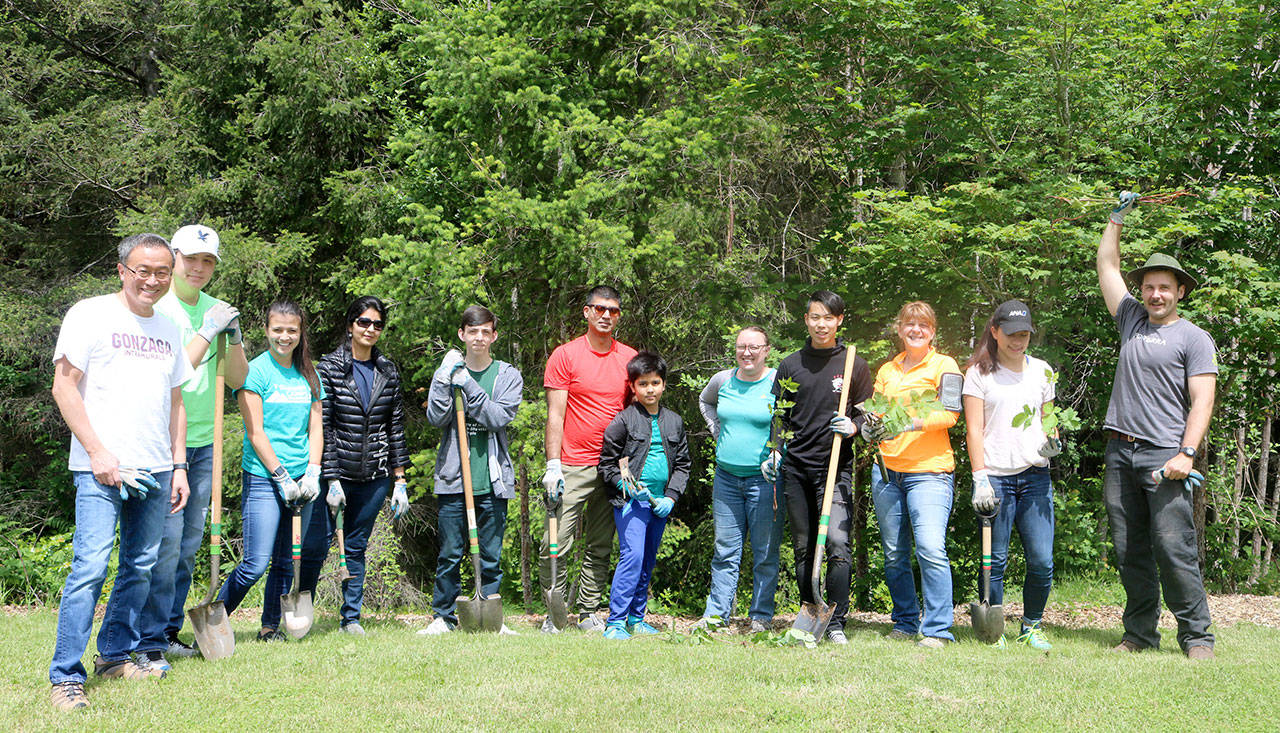In a partnership between the Snoqualmie Valley YMCA and the Green Snoqualmie Partnership, community volunteers gathered on Saturday for the first of three Stillwater Bog restoration events.
In an effort to remove invasive species and restore the quality of plant life at Stillwater Bog in Snoqualmie’s Community Park, Snoqualmie Urban Forester Phil Bennett said the two organizations partnered to hold a series of volunteer events to clean up the bog in May, June and August.
The bog, he said, is an unusual wetland on the ridge that isn’t present anywhere else in that area. The restoration is necessary as the invasive Himalayan Blackberries, Scotch Broom and Butterfly Bush have taken hold around the edges of the bog and need to be removed.
“As young native trees grow, they can get swarmed and swamped, you end up with… a non-native ugly forest edge and you lose your native conifers in the long run,” Bennett said. “The objective is going to be to remove the invasive from the edge of that valuable habitat.”
Volunteers spent Saturday identifying and taking out the plants form the area, with plans to replant strong, native plant life in the future. Charlie Vogelheim, stewardship coordinator at Forterra, was at the event with the volunteer group as they pulled blackberry roots from the ground around the bog.
Vogelheim said professional crews had come through previously to get rid of most of the blackberry plants but were unable to get them all. Now the leftover roots are growing out of the ground and can be visibly spotted and removed.
The green city partnership began in Seattle, and since then Forterra has helped expand the program to 11 other cities in King County, Vogelheim said.
Green Snoqualmie is itself a partnership of various organizations like the city of Snoqualmie, Forterra, the Snoqualmie Tribe, Mountains to Sound Greenway Trust, the Snoqualmie Ridge Residential Owners Association, King County Conservation District, Snoqualmie Valley Watershed Council and the King County Noxious Weeds Control Program. Bennett said he helped initiate the partnership in 2016 and administers the program through his role at the city. Currently he is working on a 20-year stewardship plan for the Snoqualmie public lands.
“In 20 years we want to remove the invasive species and replant with the kinds of things that are native and resilient and keep the forest healthy,” he said.
Of course, Bennett said, none of the work that has been done would be possible without help from volunteers at events like these. A few of the volunteers have chosen to dedicate even more time and act as forest stewards to lead community events like this, Bennett said.
“The thing that is most significant to me is the great efforts of people in this community but also our partners, the kind of intention that many hands make light work,” he said.
Vogelheim said that they have used professional crews in the past to work in areas on steep slopes or when power tools are required, but mostly bring together community volunteers to help maintain local forests.
“We really want to engage the community, a lot of people live next to these forests and it’s great way that people can come together with their neighbors and get to know these green spaces that they value so much,” he said.
Emily Morisawa, membership supervisor at the Snoqualmie Valley YMCA, said the blackberry removal will continue throughout the summer and will culminate in early October with Green Snoqualmie Day, the biggest volunteer event of the year.
Morisawa and Vogelheim emphasized the importance of volunteer efforts and said that anyone interested in helping out any of the several restorative projects through the valley can find more information at greensnoqualmie.org or coming into the YMCA at Snoqualmie Ridge for more information.


